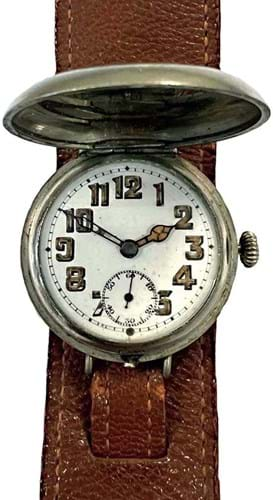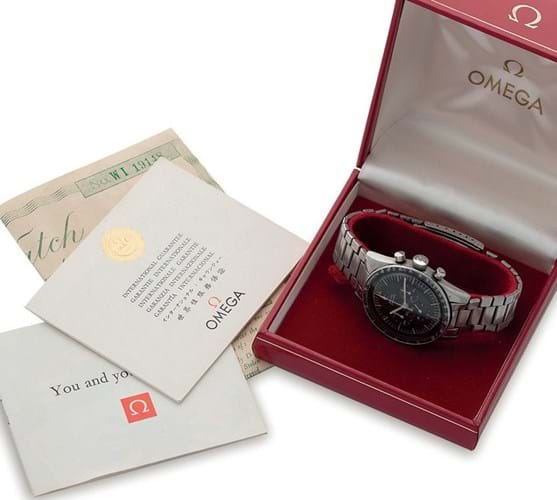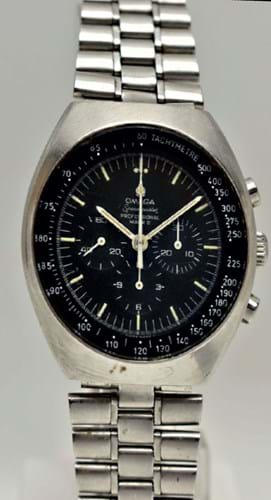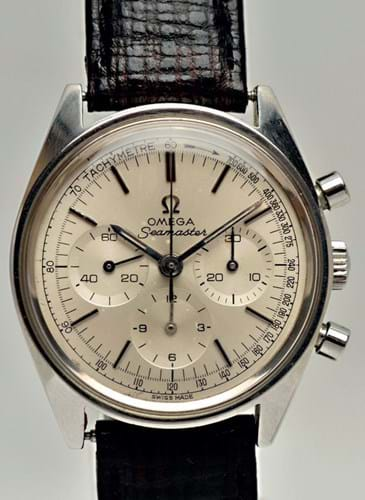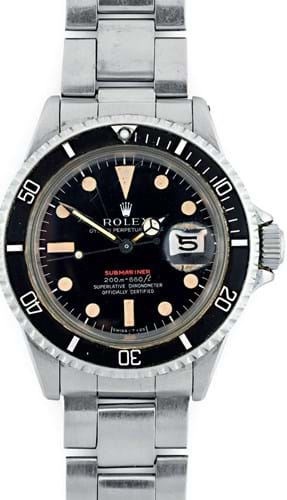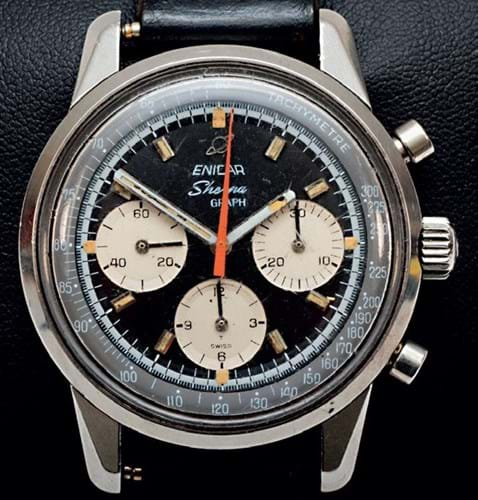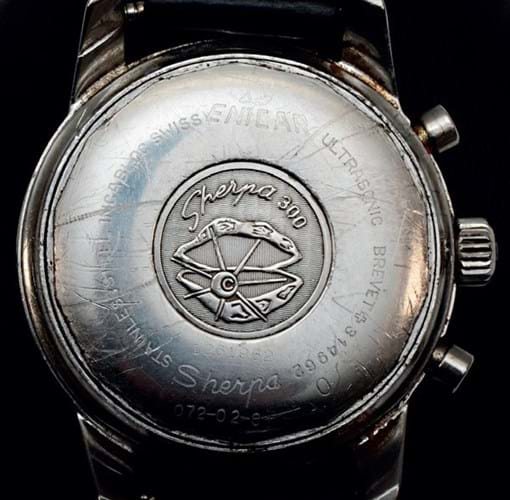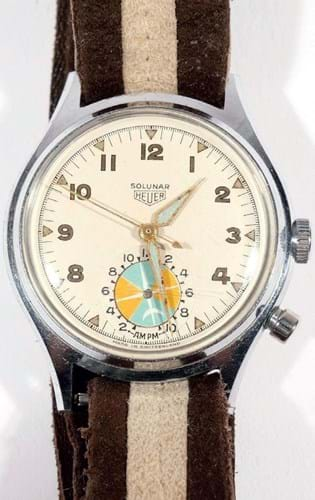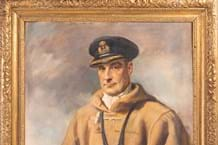The birth of the wristwatch during the First World War is well chronicled. At the beginning of conflict in 1914, officers were still wearing gleaming pocket watches on chains. By 1918 all were wearing something better suited to the new realities of mechanised warfare. Less familiar is the series of hybrid wrist-worn timekeepers known as wristlets that straddled the link between the pocket watch and the modern wristwatch. In short, its practicality was limited and the survival rate low.
The Swiss wristlet that emerged for sale at the Jewellery, Silver & Watches auction at Cheffins (24.5/20/12.5% buyer’s premium) on August 17 dated from c.1914-15. Made in base metal with a pedestrian Swiss movement of the period, the case is that of a traditional pocket watch hunter, with a hinged cover with button release at 6 o’clock retained in order to protect the brittle crystal from the rigours of the Great War.
It is marked Brevet 71363, a reference to a Swiss patent granted to Charles Zurbrüegg on June 23, 1915, for a Boîte-savonnette pour montresbracelet. These first ‘trench’ watches were only a small improvement on the pocket watch they were designed to replace.
The hinges wore thin but so too did the patience of the wearer who was occasionally inclined to simply wrench off the covers. Once ‘unbreakable’ crystals became available later in 1915 these watches were effectively obsolete. Cheffins’ example was in unusually good condition. The cover, the fixed wire lugs, the winder, dial and the hands were all intact. It was attached to what might be the original brown stitched leather twopiece cuff strap with gilt pin buckle. It is an indication of its rarity that, estimated at £100-200, it took £2000 from a UK collector.
Need for speed
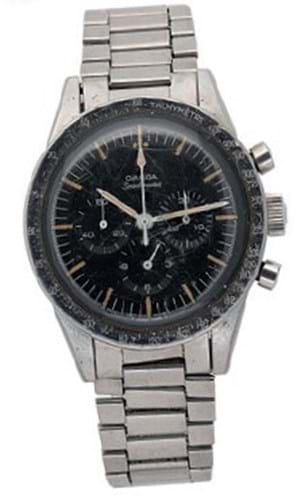
‘Pre-Moon’ Omega Speedmaster Ref 105.003, £9000 at Cheffins.
Leading the Cambridge sale at £9000 was an Omega Speedmaster Ref 105.003. Made c.1967, the socalled ‘Pre-Moon’ watch came in its original red and gold tooled case with a booklet, a card dated 15/7/69 and the original warranty certificate from the retailer. It sold to a buyer in Germany via thesaleroom.com, a bid above the top estimate of £8000.
The 105.003 and prior issues are known to collectors as ‘Pre-Moon’ Speedmasters as their manufacture predates the Moon landings. This model was later given the nickname the ‘Ed White’ as he wore one, strapped to the outside of the leftside sleeve of his G4C space suit, when completing the first space walk by an American on June 3, 1965. It was the first time a Speedy had been exposed to the vacuum of space and it kept good time.
The watch was issued between 1963-69 although the majority were made in 1965, before the 145.012 model was introduced and chosen by NASA to accompany the Apollo 11 mission to put the first man on the Moon.
The biggest difference between the Speedy and the Speedmaster Professional is the size of the case and the type of movement. The ‘pro’ has a 42mm case and a hand-wound movement.
Two of the later variants have come for sale recently: the first, with the ST14502278 styling c.1980 took a hammer price of £2500 at Duke’s (25% buyer’s premium) in Dorchester on June 15. The second, a 1970s Mark II model in a tonneau shaped case, sold for £1000 at Richard Winterton (22% buyer’s premium) in Lichfield on August 14.
The latter was part of a collection from Tamworth that also included a Seamaster ref. 145.018. The Omega Seamaster 300, launched in 1957 simultaneously with the Railmaster and the Speedmaster, appears in numerous variations.
Omega debuted the reference 145.018 in the 1960s. It was issued with a tachymeter scale on its outer track or (as here) or without. It took £2500.
Sold in Lichfield at £700 was an Aquastar Regate, a regatta timing watch first made in the 1960s. This 70s issue has the Lemania regatta calibre 1345 movement with a 10-minute countdown. The five round holes cut out of the dial, between 10 and 2 o’clock, change colour from blue to red and then to silver as the timer ticks down when the chrono is activated. This example, in working order, came with a later leather strap.
Red alert
The top watch lot at Tennants (24% buyer’s premium) on July 15 was a 1969 Rolex Single Red Line Submariner with Meters First depth rating (ref: 1680), which sold for £16,000.
In the same family since new, this rare watch is notable for the dial variant. The depth ratingappears with the metric figure first and imperial measurement second (something Rolex only did for a short period) while the word ‘Submariner’ is written in red rather than white. It is on such small things that the wristwatch market thrives. The socalled Dirty Dozen timekeepers, the watches made by 12 different Swiss makers for the British Army in the 1940s are all outwardly similar.
All have black dials, luminous hands, shatterproof crystal and stainless-steel cases, 15-jewel movements and were stamped WWW for Watch, Wrist, Waterproof and the broad arrow used on government material. However, as they were made in very different quantities by each maker, some are harder to find that others. The Grana is the rarest (around 1500 were made) with Longines and IWC second in line with around 5000 units each made.
A 1944 IWC sold at Tennants for £5500 against an estimate of £1000- 1500.
Motorsport history
An Enicar Sherpa Graph 300 sold for £3900 at Spicers (20% buyer’s premium) in Old Goole, East Yorkshire, on August 18. This good-looker, with a black tachymetre ‘reverse panda’ dial and pump-style pushers, shares the Valjoux 72 movement of a Daytona Cosmograph and has a motorsport history.
They were promoted by Stirling Moss in 1960 and Jim Clark who wore one on the way to the Formula One world championship in 1962 and 1963. Across as many as eight variants, there are small changes in dial, logo and hand design that collectors like to highlight. This one, a so-called MkIIA, with a logo change and ‘paddle’ hands dates from c.1963-65. While these watches do not have the instant brand recognition of a Rolex they do share many of the same parts. The Enicar Sherpa Graph 300 is powered by a Valjoux 72 movement, the same technology in the back of the manual winding Daytona Cosmographs.
Tennants sold a Mark 3 watch from c.1966 for £6800 in November 2021 (it came with its original bracelet and papers from 1967) while a 1960 Enicar Sherpa Graph Mark 1A featuring the rare sword-like ‘gladius’ hands sold for Can$19,000 (£12,200) at Miller & Miller in Ontario in June 2022.
Tide tracker
Among the rarest watches on the market in recent weeks was an original Heuer Solunar offered as part of Butterscotch Auction’s summer estates sale in Pound Ridge, New York, on July 16. According to the catalogue notes, these watches were introduced in 1949 as the product of a collaboration between Charles-Edouard Heuer, his 15-yearold son Jack and Dr Heinz Schilt.
Schilt was Jack’s school physics teacher and together they answered the request of Abercrombie & Fitch to create a wristwatch suitable for tracking tides to assist hunters and fisherman in their endeavours.
The tide indicator function operates on the solunar theory by which tides and animals are affected by the movement and location of the moon.
Most of these are 1970s second generation watches. This one, from c.1950 with an apparently original bi-colour fabric strap, was estimated at $2000-3000 and sold at $10,000/£8000 (plus 25% buyer’s premium).


